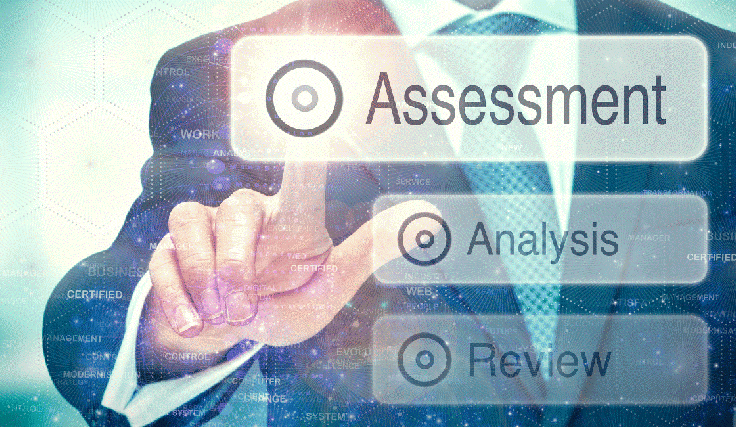Leveraging AI for Skill Assessment and Gap Analysis

“The future belongs to those who learn more skills and combine them in creative ways” - Robert Greene
HireVue is an AI-driven video interviewing platform that helps organizations assess candidates' skills and competencies during the hiring process. The platform uses natural language processing and facial analysis to evaluate candidates' responses and body language, providing insights into their communication skills, problem-solving abilities, and other relevant competencies. This helps organizations make more informed hiring decisions and identify candidates who align with their skill requirements.
LinkedIn offers a skills assessment feature that allows users to take assessments to validate their knowledge in various areas, such as programming languages, software tools, and business skills. The assessments are designed to test users' proficiency, and AI is used to score their performance. Users can then showcase their verified skills on their LinkedIn profiles, which can be valuable for job seekers and employers looking for candidates with specific skill sets.
The above are two examples of how AI is being used for skill assessment and gap analysis in the real world. AI-driven platforms like these are revolutionizing the way organizations assess and validate candidates' skills, providing valuable insights and opportunities for both job seekers and employers.
AI-powered skill assessment and gap analysis in the changing landscape of work
The world of work is changing rapidly, and with it, the skills that employees need to be successful. In order to remain competitive, organizations need to be able to assess their employees' skills and identify any gaps, so that they can provide targeted training interventions.
Artificial intelligence (AI) is playing an increasingly important role in skill assessment and gap analysis. AI-powered tools can automate the process of identifying and measuring skills, and they can also provide insights into how employees are using their skills in their current roles.
Let’s discuss how AI is used to assess employees' skills and identify gaps, allowing for targeted training interventions. We will also explore the benefits of using AI for skill assessment and gap analysis, as well as some of the challenges that organizations may face when implementing these tools.
Read here: https://www.teamleaseedtech.com/blog/what-is-causing-the-skill-gap-in-india.html
 The
Traditional Approach to Skill Assessment and Gap Analysis
The
Traditional Approach to Skill Assessment and Gap Analysis
Traditionally, skill assessment and gap analysis have often been carried out manually or through standardized tests. These methods are time-consuming, subject to human biases, and may not always provide a comprehensive view of an individual's skills. Additionally, they tend to be one-size-fits-all, making it challenging to tailor training programs to the specific needs of each employee.
 How AI is used to assess employees' skills and
identify gaps
How AI is used to assess employees' skills and
identify gaps
AI-powered skill assessment tools can be used to assess a wide range of skills, including hard skills (such as proficiency in software programs) and soft skills (such as communication and teamwork). These tools use a variety of methods to assess skills, including:
Natural language processing (NLP): NLP can be used to analyze employee resumes, job descriptions, and performance reviews to identify the skills required for different roles.
Machine learning (ML): ML can be used to develop algorithms that can predict how well an employee will perform on a particular task based on their past performance and other factors.
Psychometric testing: Psychometric tests can be used to assess a variety of cognitive abilities, such as problem-solving and critical thinking.
Once AI-powered skill assessment tools have collected data on employees' skills, they can use this data to identify gaps. This can be done by comparing employees' skill levels to what is actually required for their current roles, or by comparing their skill levels to that of other employees in similar roles.
 Benefits of using AI for skill assessment and
gap analysis
Benefits of using AI for skill assessment and
gap analysis
There are a number of benefits to using AI for skill assessment and gap analysis. These include:
Accuracy and reliability: AI-powered skill assessment tools can be more accurate and reliable than traditional methods such as self-assessments and manager assessments. This is because AI tools can analyze large amounts of data and identify patterns that humans may not be able to see.
Objectivity: AI-powered skill assessment tools are objective and unbiased. This means that they are not influenced by factors such as personal relationships or subjective judgments.
Scalability: AI-powered skill assessment tools can be scaled to assess the skills of many employees. This is essential for organizations with large workforces.
Speed: AI-powered skill assessment tools are fast. This is important for organizations that need to identify and address skill gaps quickly.
Personalization: AI provides personalized training recommendations, ensuring that employees receive the specific skills development they need to excel in their roles.
Also read: https://www.teamleaseedtech.com/blog/future-learning-ai-based.html
 Targeted training interventions
Targeted training interventions
Once organizations have identified skill gaps using AI-powered tools, they can develop targeted training interventions to address these gaps. This training can be delivered in a variety of ways, such as through online courses, workshops, or on-the-job training.
Targeted training interventions can help to improve employee performance, productivity, and engagement. They can also help organizations to reduce the costs associated with employee turnover and retraining.
 Challenges and Considerations
Challenges and Considerations
While AI offers many benefits in skill assessment and gap analysis, there are some challenges and considerations that organizations must address:
Data privacy and security: Handling sensitive employee data requires robust privacy and security measures to protect individuals' information.
Data quality: The accuracy of AI-driven recommendations depends on the quality and accuracy of the data inputs. Organizations need to uphold high data quality standards.
Ethical considerations: AI algorithms should be designed and trained in an ethical manner to avoid reinforcing biases or discrimination.
Employee acceptance: Some employees may have concerns about AI assessing their skills and career prospects. Open and transparent communication is crucial to address these concerns.
Implementation costs: The initial cost of implementing AI solutions can be significant. Organizations ought to thoroughly evaluate the return on their investments in AI.
Bias: AI-powered tools can also be biased, depending on the data that they are trained on. Organizations need to be aware of this potential bias and take steps to mitigate it.
Conclusion
In conclusion, the evolving landscape of work demands a proactive approach to skill assessment and gap analysis and AI is a powerful tool for that. However, organizations must be aware of the challenges associated with using these tools. As we have already seen, real-world examples demonstrate how AI is transforming skill assessment, enabling more informed hiring decisions and helping individuals validate their expertise. Let’s adapt continuously and learn new skills to make the future of work all the more promising.
